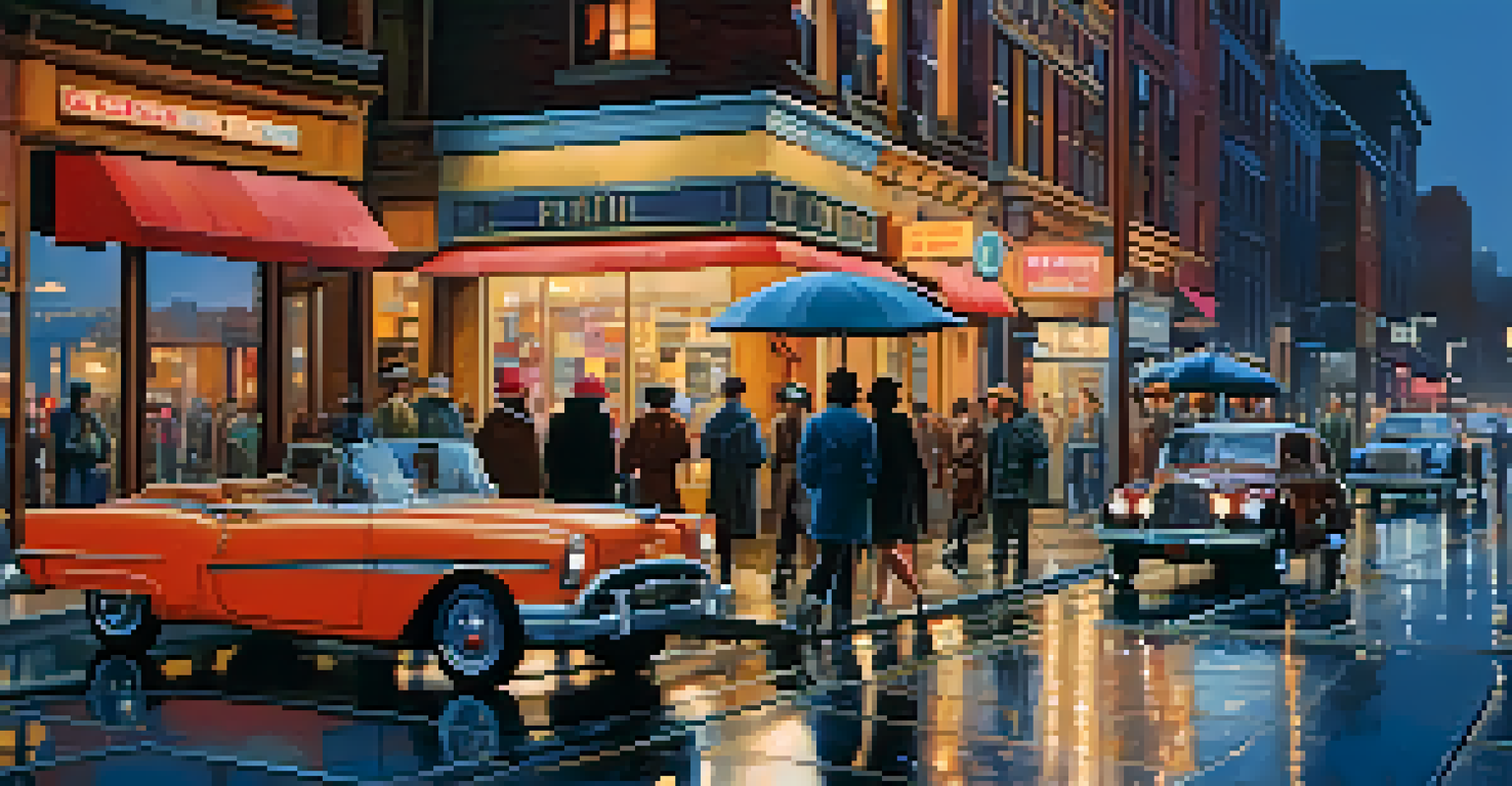How NFTs are Revolutionizing the Photography Industry Today

Understanding NFTs and Their Impact on Photography
NFTs, or non-fungible tokens, are unique digital assets stored on a blockchain, which makes them distinct from traditional cryptocurrencies. In photography, this means that artists can create verifiable ownership of their work, ensuring that each piece is one-of-a-kind. By using NFTs, photographers can protect their intellectual property more effectively, preventing unauthorized reproductions and fostering a sense of trust with buyers.
NFTs allow artists to take ownership of their work in ways traditional art forms never could.
Moreover, NFTs open up new revenue streams for photographers. Instead of just selling prints or licenses, artists can now sell their work as digital collectibles. This allows them to reach a global audience and tap into the growing market of digital art enthusiasts who are eager to invest in unique visual content.
The transformative potential of NFTs is already evident in the way photographers can interact with their audience. By creating limited editions of their work as NFTs, artists can create exclusivity and enhance their brand’s value. This shift not only changes how photographers monetize their art but also how they engage with their fans.
NFT Marketplaces: A New Avenue for Photographers
The rise of NFT marketplaces has provided photographers with platforms to showcase and sell their work directly to collectors. Websites like OpenSea and Rarible allow artists to upload their digital photos, set prices, and engage with buyers without intermediaries. This democratization of the sales process means that photographers can retain a larger share of the profits from their work.

Additionally, these marketplaces foster a sense of community among artists and collectors. Photographers can follow other creators, collaborate on projects, and participate in discussions about trends and techniques. This not only helps build their network but also inspires creativity by exposing them to diverse styles and ideas.
NFTs Empower Photographers
NFTs allow photographers to establish verifiable ownership of their work, protect intellectual property, and explore new revenue streams.
Furthermore, the user-friendly nature of many NFT platforms means that even those new to the digital space can easily navigate the process. Tutorials and resources are often available, making it simpler for photographers to jump into the NFT world and start selling their work.
The Environmental Concerns of NFTs
While NFTs offer exciting opportunities for photographers, they also raise environmental concerns due to the energy-intensive nature of blockchain technology. Many people are aware that the process of minting NFTs can contribute to significant carbon emissions. This has led to discussions within the photography community about the sustainability of using NFTs for art sales.
The real power of NFTs lies in their ability to create community and foster connections between artists and collectors.
However, it's important to note that there are emerging solutions aimed at mitigating these environmental impacts. Some NFT platforms are transitioning to more eco-friendly blockchains that use proof-of-stake systems, which require significantly less energy. Photographers can make informed choices by opting for these greener alternatives when selling their work as NFTs.
By being conscious of the environmental implications, photographers can still embrace NFTs while advocating for sustainable practices. This dual approach allows them to leverage the benefits of digital ownership without compromising their values or the health of the planet.
Building a Personal Brand Through NFTs
NFTs provide photographers with a unique opportunity to build and showcase their personal brand. By creating a series of NFTs that reflect their style or a specific theme, photographers can establish a recognizable identity in the digital art space. This branding can lead to increased visibility and recognition among potential buyers and collectors.
Moreover, the storytelling aspect of NFTs allows photographers to share the inspiration behind their work. By including detailed descriptions or behind-the-scenes content with their NFTs, artists can connect with their audience on a deeper level. This engagement not only enhances the perceived value of their art but also fosters loyalty among fans.
Community Drives NFT Success
Engaging with fellow artists and collectors is essential for photographers to gain insights, promote their work, and build a loyal fanbase.
As photographers continue to explore the NFT landscape, those who prioritize their personal brand will likely stand out in a crowded market. Consistent messaging, quality content, and authentic engagement can help them cultivate a dedicated following and drive sales of their digital art.
The Role of Community in NFT Success
Community plays a vital role in the success of photographers venturing into the NFT space. Engaging with fellow artists and collectors can create a support system that fosters collaboration and innovation. Photographers who actively participate in online forums, social media groups, and NFT discussions can gain valuable insights and exposure.
Additionally, many successful NFT projects rely on community support for promotion and sales. By building a loyal fanbase, photographers can create buzz around their releases and encourage collectors to share their work within their networks. This word-of-mouth marketing can significantly amplify their reach and impact.
Ultimately, the strength of community ties can lead to lasting relationships and opportunities. Photographers should not underestimate the power of connecting with others in the NFT space, as these relationships can open doors to collaborations, exhibitions, and new audiences.
Challenges Photographers Face in the NFT Space
Despite the promise of NFTs, photographers may encounter several challenges as they navigate this new landscape. One major hurdle is the steep learning curve associated with blockchain technology and digital wallets. Many photographers may initially feel overwhelmed by the technical aspects, which can deter them from fully embracing NFTs.
Additionally, the NFT market can be unpredictable, with fluctuations in demand and pricing. Photographers must be prepared for the possibility that their work may not sell as quickly or at the prices they expect. Developing a solid strategy for marketing and pricing is essential to thrive in this dynamic environment.
Navigating NFT Challenges
Photographers must overcome technical hurdles, market unpredictability, and competition to successfully thrive in the evolving NFT landscape.
Moreover, the sheer number of NFTs being produced can create competition, making it challenging for individual photographers to stand out. Artists need to continuously innovate and experiment with their offerings to capture the attention of collectors and buyers.
The Future of Photography with NFTs
As NFTs continue to evolve, the future of photography appears promising. The technology is still in its infancy, and new developments are likely to emerge that could further benefit photographers. This may include enhanced tools for creating and marketing NFTs, making the process even more accessible and user-friendly.
In addition, as awareness of NFTs grows, more photographers are likely to participate in the space. This influx of creative talent will foster diversity and innovation, leading to exciting new trends and styles emerging in digital photography. The combination of technology and art has the potential to reshape the industry in ways we can only begin to imagine.

Ultimately, photographers who embrace NFTs and adapt to this changing landscape will likely find success and fulfillment in their work. By staying informed and open to new possibilities, they can navigate the challenges and seize the opportunities that NFTs present, ensuring their place in the future of photography.